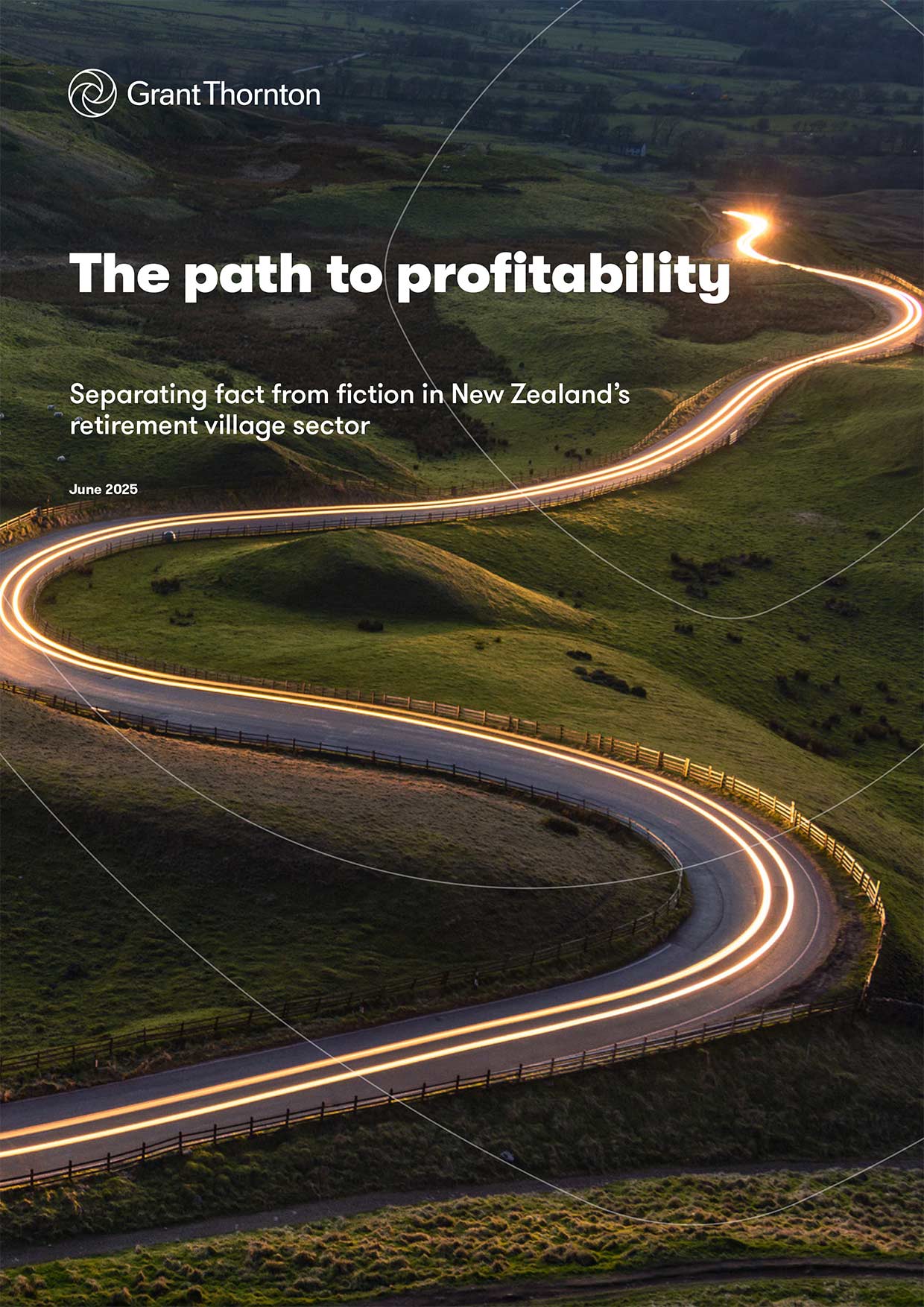The path to profitability

A sector steeped in misunderstanding
The success of New Zealand’s retirement villages is intrinsically linked to public interests like housing and health. It provides our elderly population with lifestyle choices in local communities and a clear journey through the stages of aging. Yet, operators face ongoing criticism about how the retirement village business model disproportionately benefits them financially.
This report lays bare the realities of investing and operating in New Zealand’s retirement village sector. It reveals a complex business model and challenges assumptions about profitability. It also exposes the risks and long timelines involved in achieving sustainable business outcomes.
It’s our hope the findings in this study reach far and wide – from the corridors of decision makers in parliament to the boardrooms of financial institutions, and the offices of regulatory agencies. Going forward, whenever the question, ‘why should villages be so profitable?’ is asked, we want the resounding answer by to all be: So they can survive, thrive and continue to look after people.
Pam Newlove
Partner, Retirement Village & Aged Care Services Lead


Download the report
The commonly held belief that retirement villages throughout New Zealand enjoy excessive margins and big profits can be disproven with evidence based data. This study is based on a discounted cashflow financial model of two retirement villages that represent a cross section of the sector: Rural villas in Canterbury and urban apartments in Auckland. It covers a 25-year period comprising the key stages of a retirement village development from sourcing land and construction, to project completion and revenue generation, as well as the industry-specific variables that can impact a village's profitability.
Our analysis reveals a payback period of just over 21 years for the rural complex of villas, and more than 25 years for the urban-style apartments. Find out why by downloading your copy of the report.
Get articles and updates relevant to your business and industry delivered directly to your inbox.
Your subscription was successful!
Keep an eye on your inbox for future insights relevant to you, your business and your industy.
Our retirement village & aged care experts






